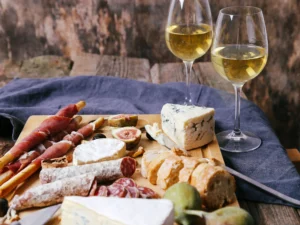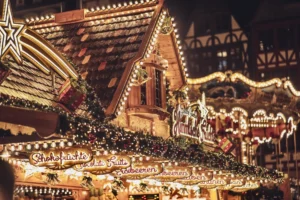Milan may not be as well-known for its cuisine as some other parts of Italy, but it has some classic dishes that you will fall in love with. If you want to experience the authentic flavors of the tradition, this is the correct city.
Here you’ll find the focus on meat, stews, rice, cheese, and butter. The food is rich and hearty, and it is meant to help fight the cold weather.
Starting from the classic Risotto alla Milanese to the famous Elephant Ear, in this article, we will let you discover 7 dishes you cannot miss when in Milan.
Play Store

App Store

Download the Bags Parking app!
Find your closest luggage storage and leave your suitcases for as long as you need. Enjoy your journey without the weight of your baggage.

Drop your bags and explore the city!
Find the perfect luggage storage nearby in just a few clicks and enjoy hassle-free exploration. Book your luggage storage today.

Drop your bags and explore the city!
Find the perfect luggage storage nearby in just a few clicks and enjoy hassle-free exploration. Book your luggage storage today.

Drop your bags and explore the city!
Find the perfect luggage storage nearby in just a few clicks and enjoy hassle-free exploration. Book your luggage storage today.

Table of Contents
Table of Contents
When we think of Milan, everything comes to mind except tradition. If we take a closer look, though, we will notice that Milan perfectly manages to coexist innovation and tradition.
Even when it comes to food, we find this harmonious coexistence between international and Milanese cuisine. We can therefore find restaurants that offer traditional Indian, Thai or Chinese food, as well as restaurants that offer traditional Milanese cuisine, and we can range from ramen to cassœula.
Although we know you’re tempted to eat only pasta and pizza during your stay in Italy, we encourage you not to. You can’t say you’ve actually experienced Milan if you don’t try the traditional Milan cuisine!
So here we are to help you, recommending 7 dishes you absolutely must try if you want to say you have eaten like a true local.
Cotoletta alla Milanese
The cotoletta alla Milanese, also known as elephant ear, is one of the most famous dishes of the Milanese tradition.
The preparation of this dish is simple, and it requires a few ingredients: veal chops with bone, eggs, breadcrumbs, and butter. The meat is beaten until it becomes as thin as possible, after which it’s breaded and fried strictly in butter. These cutlets can reach up to 40 cm in diameter, hence the name elephant ear!
Mondeghili
Mondeghili is a traditional peasant dish whose origin comes from very far away. The name derives from the Arabic word al-bunduck, which means meatballs, but mondeghili were officially brought to Lombardy by the Spanish between the 16th and 18th centuries.
They may look like ordinary meatballs, but beware of calling them that! The recipe, which differs from the classic meatballs, was born as a ruse of recovery of leftover meat: they are, in fact, prepared using boiled beef combined with sausage, mortadella, bread soaked in milk, egg, cheese, garlic, and nutmeg. The patties are then dipped in breadcrumbs and fried in butter.
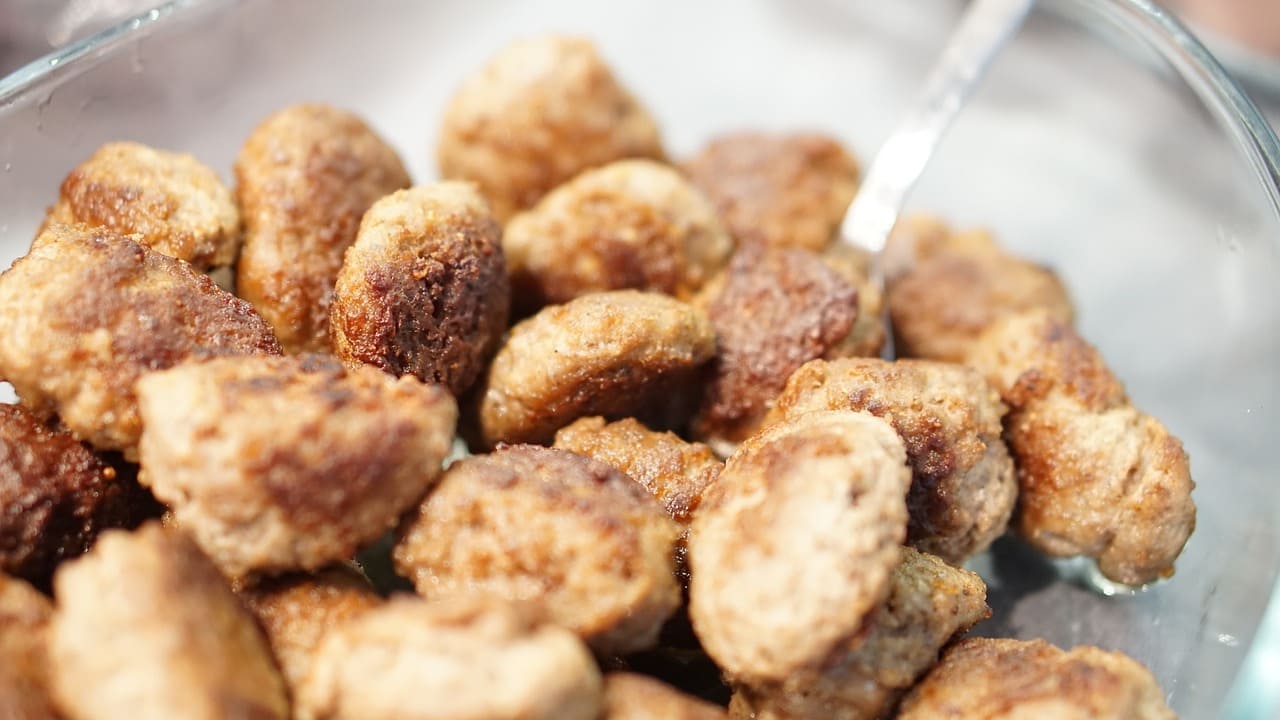
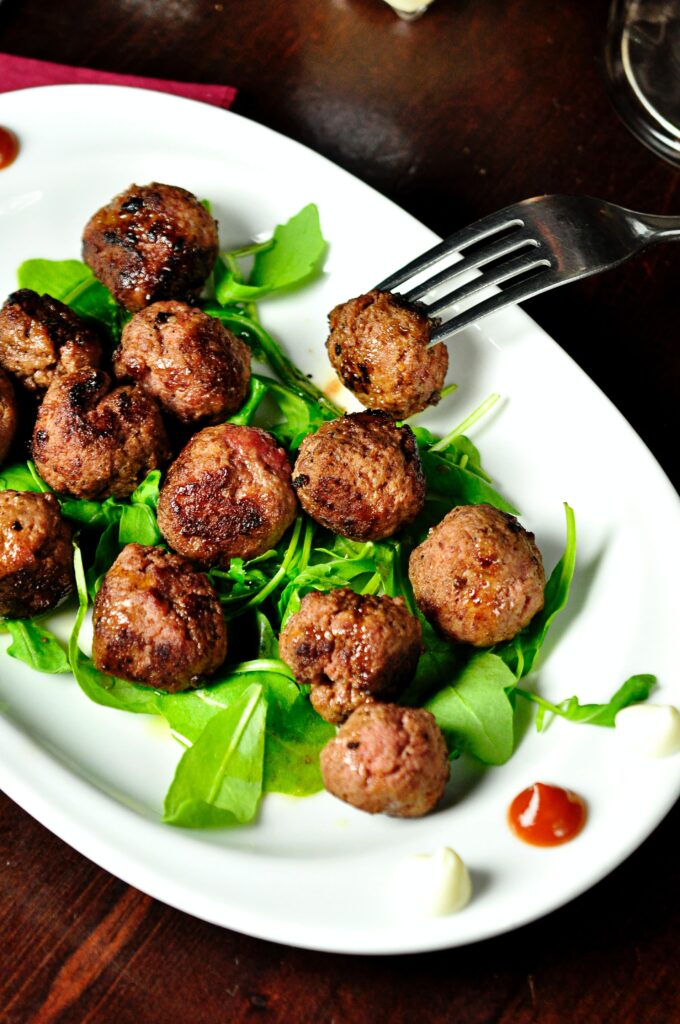
Risotto alla Milanese with Ossobuco
As mentioned above, the heart of Milanese cuisine is meat. It’s not a coincidence, in fact, that we can also find it in this main dish symbol of the Lombard gastronomic tradition.
We are talking about Risotto alla Milanese with Ossobuco. This is a rich and tasty dish: the rice owes its bright color and aroma to saffron, while its consistency is due to a perfect creaming with butter and grated Parmesan cheese. Finally, the ossobuco – or “oss buss” as the locals call it – gives the dish creaminess thanks to its slow stewing.
The final non-negligible touch is the addition of Gremolada: a finely chopped mixture of garlic, parsley, and lemon zest.
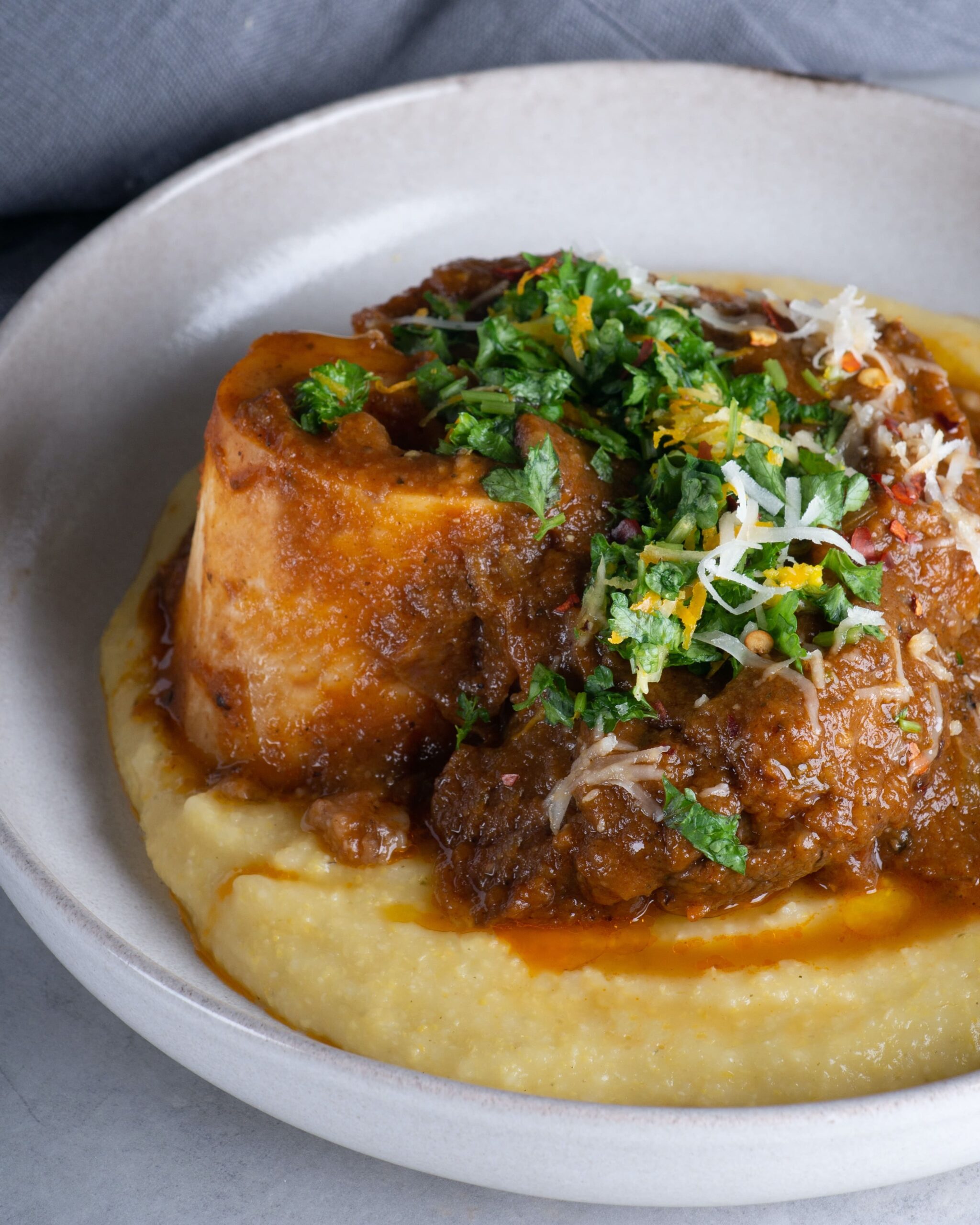
Minestrone Milanese style
This dish boasts a centuries-old history. Its origins, in fact, date back to the early 1800s when it became a traditional peasant dish.
According to tradition, the recipe requires only local, easily findable, and cheap ingredients.
This meal is in fact prepared with vegetables, such as zucchini, peas, beans, spinach with dark leaves, cabbage, and crispy carrots.
Only later on, the Minestrone was enriched with potatoes and tomatoes.
When making this dish, the most important thing is patience. Vegetables must be cooked for about four hours. The exceptions are savoy cabbage, added one hour before the end, and rice poured 20 minutes before turning off the fire.
Minestrone alla Milanese is a delicious and nutritious dish, perfect in every season of the year, either cold or steaming.
Rostin negàa
Rostin negàa or “drowned roast” is considered to be one of the most delicious foods in Milan.
To prepare this dish, you need to brown the veal cutlets in butter with bacon and rosemary and then “drown” them in beef broth, vegetables, and white wine.
In the past, the cooking took place in a special low pan made of brass or terracotta called stuin, placed directly on the embers of the hearth.
Cassœula
Cassœula, a traditional dish made of pork and cabbage, is a typical winter dish. This elaborate meal with a unique and strong flavor is perfect to warm up the cold days of winter.
The name cassœula probably comes from the spoon used to mix it (casseou) or from the pot in which it is prepared (casseruola).
Legend has it that the cassœula was born during the Spanish domination when an army officer fell in love with a young woman from Milan who worked for a noble family. He taught her this recipe, which required the combination of pork and savoy cabbage, and she successfully proposed the dish to her employers.
Panettone
Here we are at the iconic Italian Christmas dessert and symbol of Milanese pastry making: panettone.
The preparation of this dessert, which starts with simple ingredients such as flour, egg yolk, butter, sugar, natural yeast, raisins, and candied citrus fruit, is very complex. In fact, it is necessary to consider a minimum of 30 hours of work in which are made two doughs and three leavening phases.
About the origin of “Panetun” as locals call it, there are many versions, but the most incredible one says that it was a mistake.
Apparently, it is said that in 1495, during Christmas at the court of Ludovico il Moro, the scullion Toni burned the doughnuts in the oven. To make up for the damage, he improvised on a cake he had put aside for the brigade: the Pan de Toni.
Tradition has it that a slice of panettone opened at Christmas should be kept until February 3, the day of Saint Blaise, and then eaten in his honor. The Saint is said to have saved a boy from choking by making him ingest bread. So if you want to ward off sore throats and colds, eat a slice of Christmas panettone on February 3.
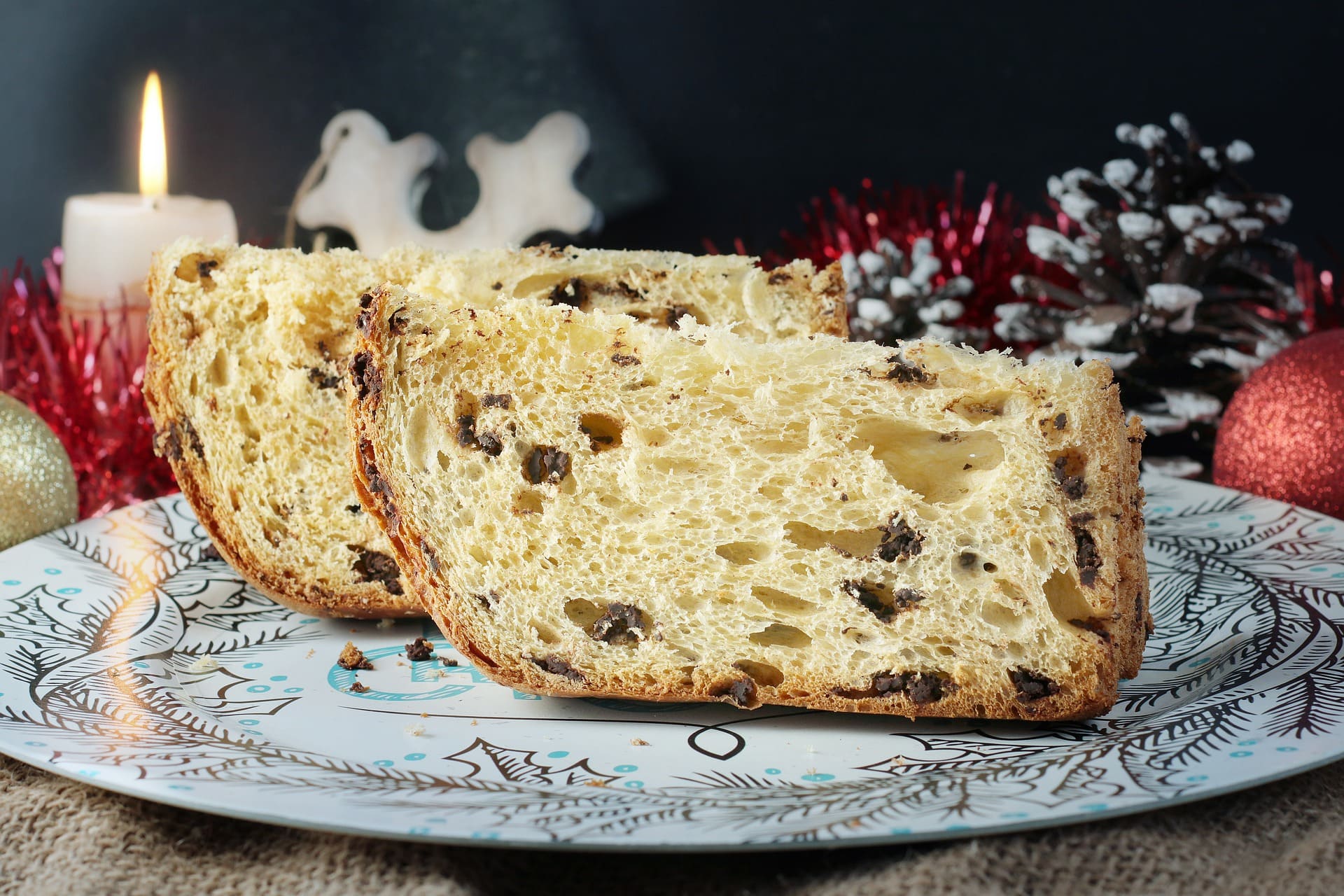
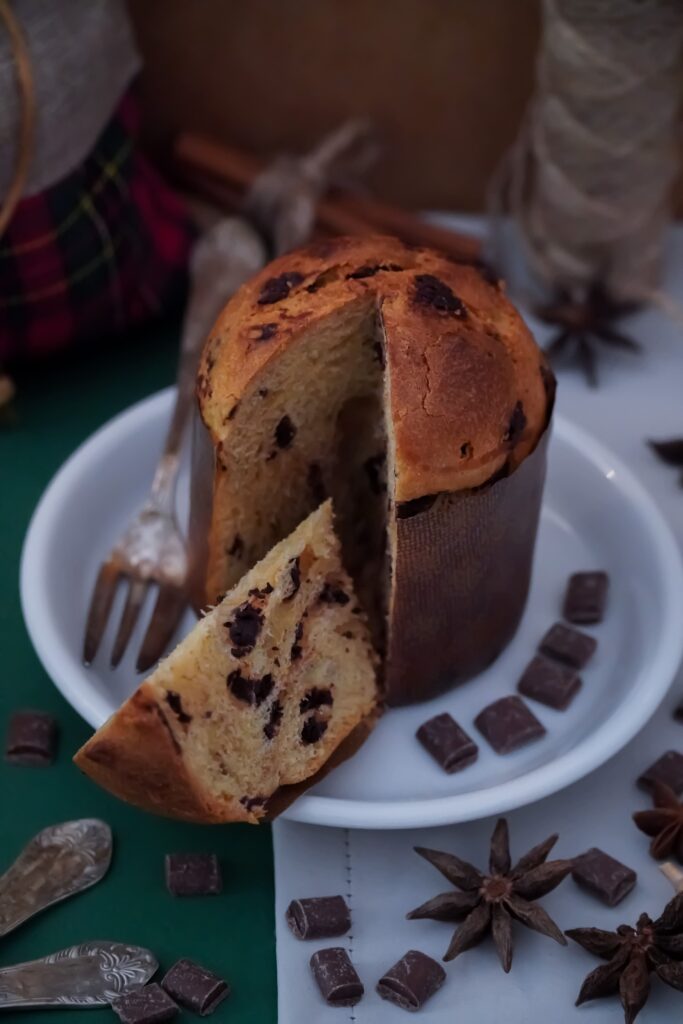
In Milan there are many foods to eat, and many more sights to see. Don’t let your luggage stop you from enjoying every moment of your vacation in this wonderful city! Download our app to find your closest luggage storage and leave your suitcases for as long as you need.
Don’t forget to read the article we wrote to help you find our luggage storage in Milan (and some hidden gems that maybe you didn’t include in your itinerary).
Drop your bags and explore the city!
Find the perfect luggage storage nearby in just a few clicks and enjoy hassle-free exploration. Book your luggage storage today.

Drop your bags and explore the city!
Find the perfect luggage storage nearby in just a few clicks and enjoy hassle-free exploration. Book your luggage storage today.

Drop your bags and explore the city!
Find the perfect luggage storage nearby in just a few clicks and enjoy hassle-free exploration. Book your luggage storage today.

Play Store

App Store

Download the Bags Parking app!
Find your closest luggage storage and leave your suitcases for as long as you need. Enjoy your journey without the weight of your baggage.

If you liked this article, share it with your friends and follow us on our social!
You might also be interested in:
You might also be interested in:



